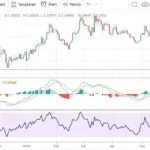Introduction
The classic debate between value investing and growth investing has resurfaced as one of the defining discussions of 2025. After years of market volatility, inflationary pressures, and rising interest rates, investors are once again re-evaluating where the best opportunities lie.
Should you focus on value stocks — stable, often undervalued companies trading below their intrinsic worth — or growth stocks, which promise rapid expansion and higher future earnings?
Let’s explore both strategies, the factors shaping their performance in 2025, and which might offer the winning edge for investors in the year ahead.
1. Understanding Value vs. Growth Stocks
Before diving into performance trends, it’s essential to clarify what sets these two investment styles apart.
| Aspect | Value Stocks | Growth Stocks |
|---|---|---|
| Definition | Companies trading below their fundamental value | Companies with high earnings growth potential |
| Typical Traits | Low P/E ratios, steady dividends, mature businesses | High P/E ratios, little to no dividends, fast revenue growth |
| Industries | Finance, energy, consumer goods, industrials | Tech, biotech, cloud computing, AI |
| Investor Focus | Undervalued opportunities | Future potential and innovation |
| Risk Level | Lower risk, slower returns | Higher risk, higher potential rewards |
Historically, both have rotated in and out of favor depending on interest rates, economic growth, and market sentiment.
2. The Market Landscape in 2025
As we move deeper into 2025, several macroeconomic factors are shaping the performance of both strategies:
- Interest Rates: Central banks have begun signaling gradual rate cuts after a prolonged tightening cycle. Lower rates typically favor growth stocks, as borrowing costs decrease and valuations expand.
- Inflation: While inflation remains elevated in some regions, it has cooled from 2023 highs — boosting corporate profitability.
- Earnings Stability: Investors are showing renewed appetite for companies with predictable cash flows, giving value stocks a steady floor.
- AI and Tech Expansion: Growth stocks tied to artificial intelligence, semiconductors, and cloud infrastructure continue to outperform broader markets.
The result? A more balanced environment — where both strategies have room to shine.
3. The Case for Value Stocks in 2025
After years of being overshadowed by tech-driven growth stocks, value investing is enjoying a quiet comeback. Rising dividends, strong cash flows, and defensive balance sheets make value stocks appealing for investors seeking stability amid uncertainty.
Key Drivers for Value Stocks:
- Attractive Valuations: Many financials, industrials, and consumer staples remain undervalued relative to earnings.
- Steady Dividends: Dividend yields above 3% offer a cushion against market volatility.
- Economic Recovery Plays: Value sectors like energy, materials, and banking benefit from infrastructure spending and global demand recovery.
Top Performing Value Sectors in 2025:
- Financials: Banks are gaining from improved lending margins.
- Energy: Oil and renewable energy producers see stable cash flow amid transition investments.
- Healthcare: Defensive, consistent earnings attract cautious investors.
Value ETFs to Watch:
- Vanguard Value ETF (VTV)
- iShares Russell 1000 Value ETF (IWD)
4. The Case for Growth Stocks in 2025
Growth stocks, particularly in the technology and AI sectors, continue to dominate headlines. Despite high valuations, investors remain bullish on innovation-driven companies reshaping the global economy.
Key Drivers for Growth Stocks:
- AI Boom: Companies like Nvidia, Microsoft, and Alphabet are capitalizing on AI’s commercial adoption.
- Cloud and Software Expansion: SaaS and cybersecurity firms maintain double-digit growth rates.
- Falling Interest Rates: Lower discount rates make future earnings more valuable, boosting valuations.
Top Performing Growth Sectors in 2025:
- Technology: AI, chips, and automation remain core investment themes.
- Consumer Discretionary: Brands with digital-first strategies see strong demand recovery.
- Green Tech: Renewable energy startups are gaining investor traction.
Growth ETFs to Watch:
- Vanguard Growth ETF (VUG)
- ARK Innovation ETF (ARKK)
5. Historical Context: Rotation Between the Two
Historically, value stocks outperform during periods of high interest rates and inflation, while growth stocks dominate during low-rate, high-liquidity environments.
- 2010–2020: Growth ruled, led by the tech revolution.
- 2022–2023: Value outperformed as inflation surged and rates rose.
- 2024–2025: The balance is shifting again — with growth reclaiming leadership as rate cuts loom, but value maintaining resilience.
This cyclical rotation suggests that diversification between both styles is crucial.
6. Hybrid Approach: Blending Value and Growth
In 2025, investors no longer need to pick sides. The modern portfolio blends both strategies to achieve growth potential with downside protection.
Practical Tips:
- Allocate by Market Conditions: 60% growth, 40% value during rate cuts; reverse during tightening cycles.
- Use ETFs for Diversification: Balanced funds like the Vanguard Balanced Index Fund (VBIAX) offer exposure to both.
- Focus on Quality: Look for companies that combine growth potential with profitability — sometimes called “GARP” (Growth at a Reasonable Price) stocks.
- Rebalance Annually: Adjust allocations as macro conditions evolve.
7. Which Strategy Wins in 2025?
The short answer: It depends on your investment goals and risk tolerance.
- If you seek long-term capital appreciation and can stomach volatility, growth stocks may continue to outperform — especially in AI, cloud computing, and automation.
- If you prefer stability, income, and lower risk, value stocks remain attractive, offering solid returns through dividends and steady cash flows.
However, with markets showing both innovation and resilience, a balanced strategy may be the real winner in 2025. Combining the compounding potential of growth with the reliability of value provides the best of both worlds.
Conclusion
The “value vs. growth” debate isn’t about choosing one over the other — it’s about understanding how each performs in different economic cycles.
In 2025, growth stocks are thriving on AI-driven optimism, while value stocks anchor portfolios with dependable earnings and dividends. The smartest investors are blending both approaches, leveraging diversification to build resilient, long-term wealth.
In the end, the true winner isn’t value or growth — it’s balance, patience, and strategy.















